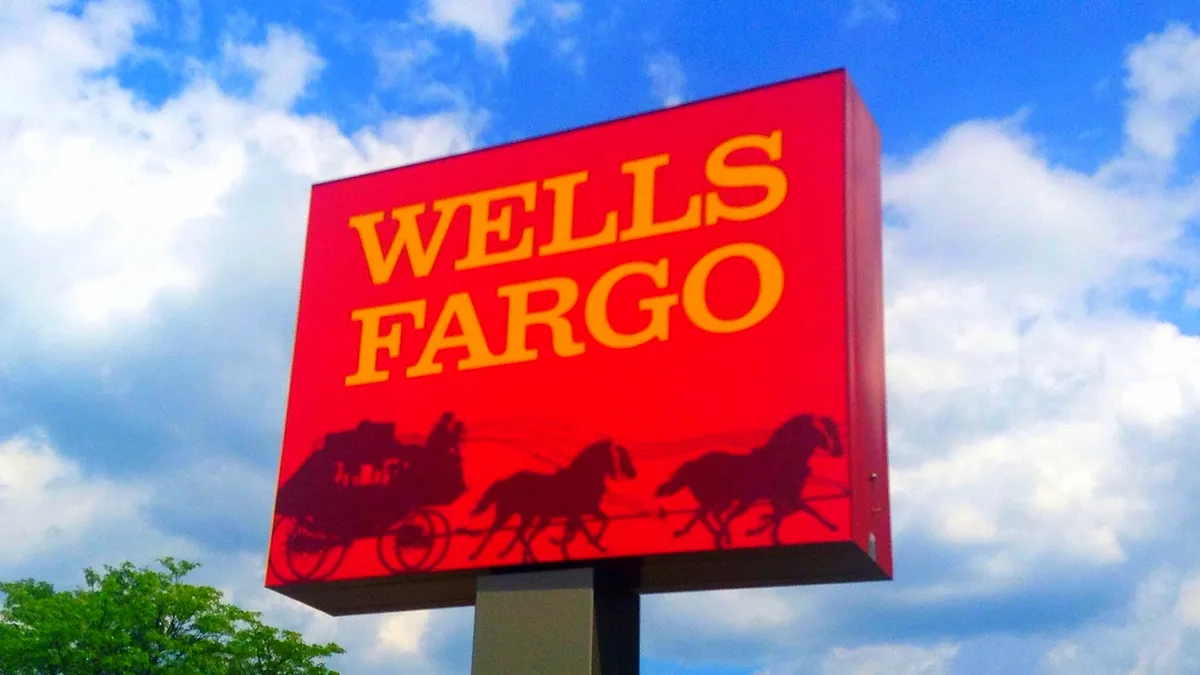Dive Brief:
- Sen. Elizabeth Warren, D-MA, is asking the Federal Reserve to consider Wells Fargo's forbearance missteps in consideration of lifting the $1.95 trillion asset cap the central bank imposed on the San Francisco-based lender in 2018.
- Wells Fargo identified 904 accounts, as of Aug. 31, held by customers in active bankruptcy proceedings to whom it provided forbearance relief that was not requested, the bank said in a Sept. 4 letter to Warren, which the senator included last week in correspondence with the Fed.
- In a separate letter dated Aug. 12, the bank told Warren it had received and reviewed about 1,600 complaints from customers indicating they did not request a forbearance.
Dive Insight:
"In the spirit of providing assistance, we may have misinterpreted customers' intentions in a small number of cases," Wells Fargo spokesman Tom Goyda told Banking Dive in July, after it was reported that the bank paused mortgage payments for some accounts.
Some Wells Fargo customers in Chapter 13 bankruptcy said they were placed in a CARES Act program for struggling borrowers hurt by the coronavirus pandemic without their consent.
"In those limited cases, we are working directly with customers to ensure they are receiving the assistance they need and make any corrections to their accounts that may be required,” Goyda said.
Of the 904 accounts the bank identified for which forbearance was not requested, 179 were current on mortgage payments when the bank provided forbearance, Wells Fargo said in its Sept. 4 letter.
Customers connected to 355 accounts confirmed they wanted the forbearance assistance, the bank said. About as many — 344 — confirmed they did not want the help. The bank said it is reaching out to the remaining 205 to determine whether they wanted forbearance assistance.
"We filed 223 notices of forbearance or similar filings with the bankruptcy court in connection with these accounts," Kristy Fercho, a Wells Fargo executive vice president and head of home lending, wrote to Warren. "We are working with these customers to withdraw, or seek permission to withdraw, these filings and determine the possible impact to the customer if a bankruptcy trustee withheld disbursement as a result of the forbearance. To date, we have withdrawn 200 notices."
The bank told Warren it "subsequently changed our practices to ensure that customer service representatives expressly confirmed a customer's intent before providing a forbearance."
In her letter to Fed Chair Jerome Powell, Warren raised concerns that an unwanted forbearance may prevent a customer whose mortgage payments were up to date from refinancing a home while interest rates are low.
"Wells Fargo, in its internal scripts for consumers calls (which they provided to my office upon request) … indicated that although the forbearance would not affect FICO scores, it could affect scores calculated by credit bureaus such as Equifax and TransUnion, which could in turn, potentially affect consumers' access to credit," Warren wrote. "The company also promised that '[w]e remain committed to make things right for any customer who tells us that he or she received an unwanted or unneeded forbearance.' … But it is not clear how Wells Fargo will remediate any potential damage done to these customers prior to the time the company identified them as being placed into forbearance without their consent, or whether they will ever be able to identify all affected consumers."
Wells Fargo began 2020 with 12 enforcement actions against it — many related to the 2016 fake accounts scandal that is largely responsible for the asset cap the Fed placed on the bank. However, the bank has also been embroiled in an auto insurance scandal that may have contributed to 27,000 repossessions. Additionally, Rep. Katie Porter, D-CA, called out the bank last year for collecting a monthly checking account service fee "deceptively."
"This recent incident is another stark reminder that Wells Fargo has not yet implemented the types of structural reforms needed, and that much additional progress is necessary before the Fed begins to consider permanently lifting the asset cap," Warren wrote to Powell.
Bloomberg analyses have estimated the asset cap has cost Wells Fargo $4 billion in profits since 2018 — and $220 billion in stock market value. The bank announces its third-quarter earnings Oct. 14. It took its first quarterly loss since 2008 in the second quarter, at which point it reduced its dividend payout to 10 cents per share.














